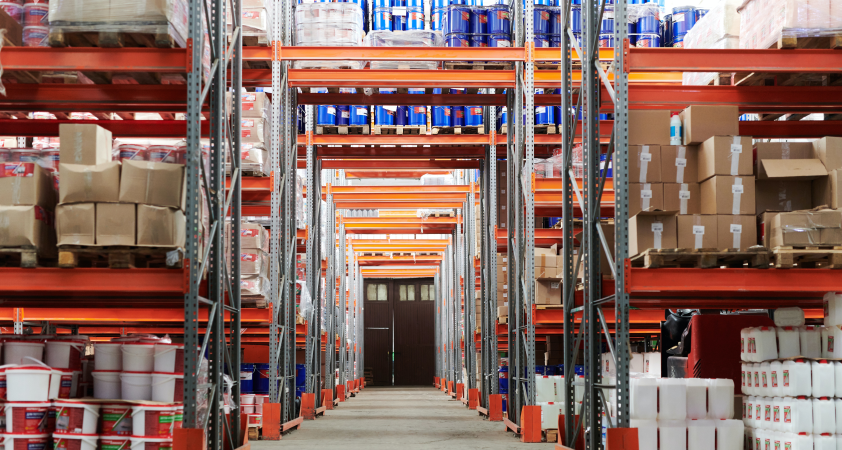
April 12th, 2022
Supply Chain AI: Squashing the Nightmare that is Coronavirus
Countless business supply chains that have been bruised or broken by Coronavirus will be turning to AI in the coming months and years to help ensure such a fiasco is never repeated.
As with all things, AI companies that bring in an AI consultant to migrate their business to supply chains managed by AI will be able to pick the best solution for their needs and save significant time and money in the process.
The Expansion of Al-Powdered SCM
Companies will find that many of their competitors are implementing AI in the same way. Research and Markets, for example, predicts that AI in supply chain management (SCM) will be a $16.7 billion market globally by 2027.
Spending on cloud-based AI-as-a-Service for SCM alone is projected to exceed $3 billion globally by 2027. And companies switching to these systems successfully stand to see the efficacy of their SCM operations jump by more than 65%.
This is due to the overall improvement of workflow, management, communication, and collaboration of information between departments by automating these processes through an AI-powered SCM system.
Another highly respected group of market analysts sees similar widespread adoption of supply chain AI. It predicts 50% of all supply chain forecasts will be automated by AI by 2023.
Those who adopt AI-powered SCM early on have reduced logistics costs by an average of 15% and improved service levels by 65%.

Times Are Changing
This widespread integration of AI is driven by the need to adapt to the new and changing circumstances within the logistic industry. Many of those who work in logistics know it’s an industry that has been slow to change and adopt innovative technology to push it forward.
We have witnessed the stubborn persistence of a broken supply chain throughout the years, and it was further aggravated by the virus.
Choked ports, blocked canals, gridlocked train terminals, frayed air cargo hubs, shuttered factories, waylaid logistics workers, and empty store shelves are all examples of just how broken the supply chain has become.
Companies found themselves crippled and realized the traditional SCM planning they were using would no longer work. They needed to pivot, and they wanted to be sure that the next time around, they’re not caught flat-footed by the next virus variant, the next blocked canal, or the next unexpected supply chain wallop.

How AI Can Improve Supply Chain Management
Optimally, getting past the virus and other unwelcome surprises will require a merging of a number of data systems, including enterprise research planning (ERP), transport management systems (TMS), and warehouse management systems (WMS), all put into one overarching system, which can be analyzed and overseen by AI.
Here, AI’s ability to crunch torrents of data with blazing speed, find new patterns and relationships in data, and come up with new perspectives, new solutions, and new best practices, is custom-made to merge these systems.
Essentially, once an AI-driven SCM system is up-and-running, companies can run a digital model of their SCM, a ‘digital twin,’ so to speak, to come up with the best solution for any supply chain challenge
The Use of AI-Powered Digital Twin
Businesses already armed with AI-powered digital twins, for example, can regularly run ‘What If’ simulations to identify supply chain issues before they occur and come up with solutions for those issues.
With a digital twin, a supply chain manager can ask AI questions such as, “What if our top supplier in Bangkok goes down?” and receive an answer, often seconds later. The solution given could be perhaps sourcing a collection of other suppliers that together provide the same value and service at the same cost.

Provides Solutions for Areas of Improvement
Other simulations on an AI-powered digital twin can quickly point out bottlenecks, vulnerabilities, and opportunities for improvement that wouldn’t be seen using a traditional, fragmented view of the supply chain that is often blind to data tucked away in numerous company data silos.
Such AI-driven simulations can also be tapped to triage the use of hard-to-find supplies. For example, “If we only have so much lithium, where should it be routed to ensure it ends up in our products with the highest profit margin or the products that go to our most important customers?”
Furthermore, with every simulation run and optimal decision from those simulations implemented, the AI-powered SCM will continue to grow in intelligence. This means that AI becomes more accurate and reliable in its programming.
Continued Learning
With each decision, the AI system learns from the subsequent real-world outcome whether or not its suggested solution works, works better than forecast, or works worse than forecast.
As the AI absorbs that knowledge, it self-tweaks its systems, adjusting its decision-making ever-so-slightly, ensuring that it makes a better decision the next time around.
And the next.
And the next.
Time to Level Up with AI!
Of course, putting together such a God’s Eye View AI System will demand effort. This will be especially true at large enterprises, which often have supply chains that encircle the globe and sports hundreds or even thousands of suppliers.
Even so, the alternative is battening down the hatches with the status quo to stay relevant in an industry that’s shifting with the changing times. Using outdated methods in a world where competitors are already using AI-powered SCM and technology is becoming the center of how businesses operate seems ill-advised to contemplate.

